Fine 18th Century English Terrestrial Pocket Globe by Cary, London, 1791
Sold
Request Information
Follow Us
Fine 18th Century English Terrestrial Pocket Globe by Cary, London, 1791
Cary’s Pocket globe, agreeable to the latest discoveries, London: J&W Cary, Strand, April 1791
A rare 3 inch diameter example of Cary’s pocket globe in a superb green shagreen-covered case with two silvered hook and eye clasps. The terrestrial globe, itself 3 inches in diameter, covered with copper-engraved hand-coloured gores applied to a plaster and papier maché sphere, the case lined on one half with a map entitled “The World as it was known in Cæsar’s time agreable to D’Anville”, on the other half with “A Table of Latitudes and Longitudes of Places not given on this Globe”. The outer circumference of the spherical case is banded in a silvered metal.
All three voyages of Captain James Cook are marked on the globe, suggesting both the public and Cary’s fascination with these feats of maritime endeavour.
Voyage One. HMS Endeavour, 1768-71. Cook was instructed to undertake a scientific voyage to the Pacific Ocean. He set sail rounding Cape Horn before making landfall in Tahiti, circumnavigating New Zealand, moving up the East Coast of Australia and finally to Indonesia. The newly discovered Endeavour Strait is marked on the globe between Australia and Prince of Wales Island.
Voyage Two. HMS Resolution and HMS Adventure, 1772-75. Cook was commissioned by the Royal Society to sail south in search of the hypothetical Terra Australis. In doing so, Cook became one of the first known explorers to cross the Antarctic Circle. Cook turned to restock in Tahiti just before sighting mainland Antarctica. Terra Australis was not sighted but, having visited New Zealand, the South Sandwich Islands (‘Sandwich Land’ on this globe) were discovered and named.
Voyage Three. HMS Resolution and Discovery, 1776-79. The official public reason for the voyage was to return a pacific islander, from the second voyage, to Tahiti. In reality, the voyage’s principal purpose was to navigate the Northwest passage. Following a stop in Tahiti, Cook made formal contact with Hawaii, before heading north towards the supposed Northwest Passage. While Cook was ultimately unsuccessful in locating the passage, he became the first to chart the majority of America’s Northwestern coast line.
Cook returned to Hawaii where he had previously stopped en route to America. Following an ill-fated encounter with Hawaiians and an argument over ship repairs, Cook and some of his men were killed. This is commemorated on the globe with the inscription ‘Owhyee where Cook was killed 1779’.
The globe also shows the 1780 return journey of the expedition albeit under the command of John Gore and Captain James King. Cook is not the only explorer to be commemorated: amongst other Mackenzie’s 1789 explorations in north-western Canada, showing ‘Mackenzie’s R[iver]’, a decade before Mackenzie’s own maps were published in 1801.
About the makers:
The notable and much celebrated Cary family of cartographers and globe makers were responsible for some of the finest known globes of the period. Having served a seven year engraving apprenticeship under William Palmer, the firm itself was started in London in the late 18th century by John Cary (1755 – 1835) and located at 181 Strand. In producing globes, John often worked in partnership with his younger brother William Cary (c. 1760 – 1825), a scientific instrument maker. This led to the firm being commonly known as J & W Cary. John is widely regarded as the most influential private map maker of his generation. Both John and William also produced maps and other instruments in addition to their globes. Evidence suggests that it was only the globes that were produced jointly.
The first globes by Cary were advertised in the ‘Traveller’s Companion’ in January 1791. The advertisement mentions that differing sizes of terrestrial globes, including a 3 ½ inch, were available and made from ‘entire new plates’. This was seen as particularly noteworthy – the copper plates for the gores were expensive to produce and often used repeatedly through generations.
Condition
Good. Wear consistent with age and use. Globe and hemispheres good with wear commensurate with age. Case good with the usual wear.
Dimensions
Height: 3in. (7.62 cm)
Diameter: 3 in. (7.62 cm)
Literature
Oxford Dictionary of National Biographies
Dahl, Edward H., ‘Sphaerae Mundi’, p.96; Dekker, Elly, ‘Globes at Greenwich’, 1999, pp. 293-295;
van der Krogt, Peter, ‘Old Globes in the Netherlands’, 1984, p,96.
PREVIOUSLY SOLD
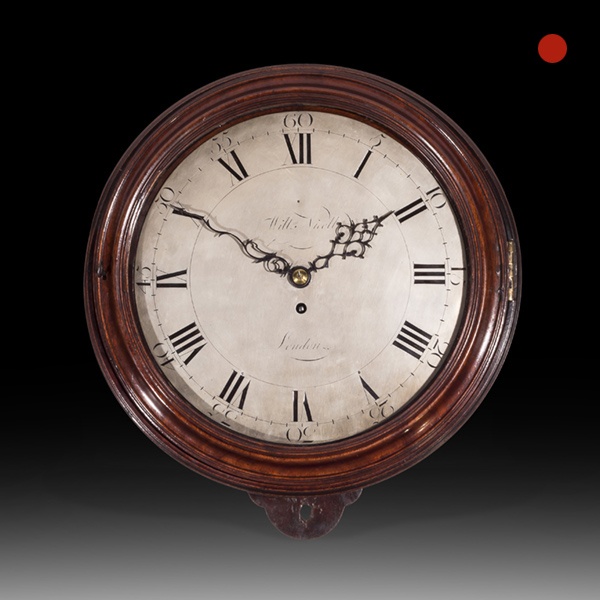
Large Mahogany 18th-Century Dial Clock, William Nicoll, London
The solid mahogany case has a moulded mahogany glazed door, which can be locked on the left-hand side. The original rectangular saltbox is permanently attached to the front and has doors to the side and the bottom.
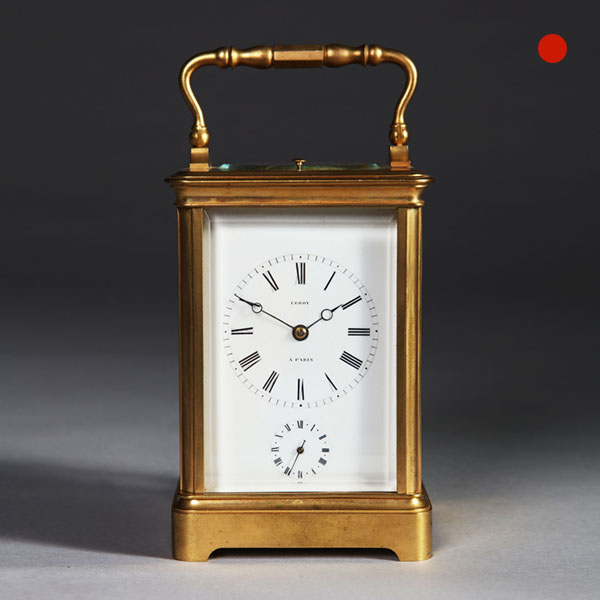
19th-Century Quarter-striking Carriage Clock by Leroy, Paris
The gilt-brass, so-called corniche case has bevelled glass panels on all sides so that the movement is entirely visible. It is surmounted by a shaped carrying handle. The white enamel dial has a Roman chapter ring, with Arabic five-minute and minute divisions.
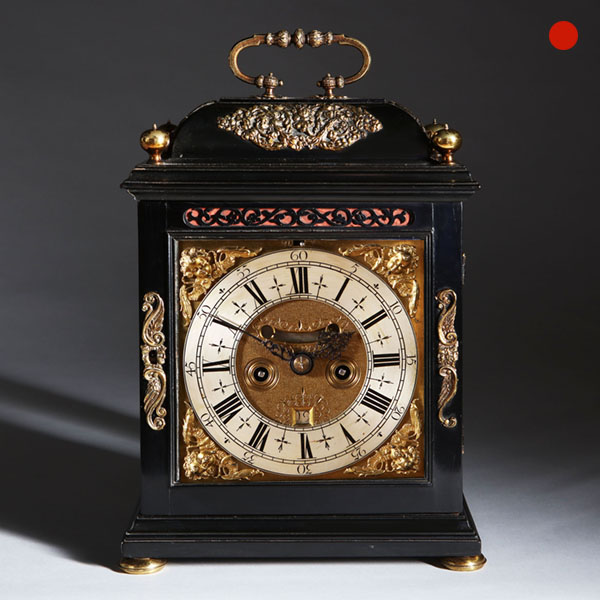
William and Mary Ebony Veneered Bracket Clock by Johnathan Lowndes
The ebony-veneered case has a so-called domed top, a design which became popular in the Charles II period (from 1675 onwards). The case is adorned with repousse brass ornaments and rests on gilt-brass bun feet. It is surmounted by a brass carrying handle of typical shape.
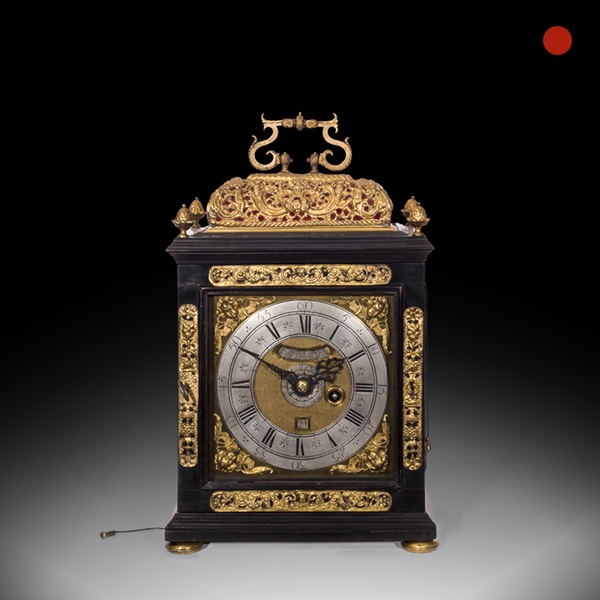
17th-Century Ebony Veneered Table Clock with Alarm and Pull Quarter Repeat
A magnificent sprung driven table clock by respected London maker George Etherington. The late 17th century, ebony- veneered table clock with alarm and pull quarter repeat on two bells, signed on the chapter ring Etherington London, and on the backplate Geo Etherington LONDON, c. 1695-1700.
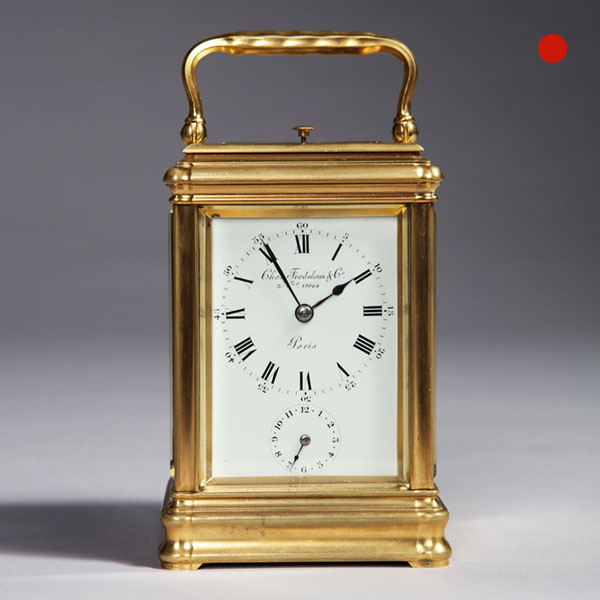
19th-Century Carriage Clock signed Charles Frodsham, London
The so-called gorge case has its original gilding. It has bevelled glass panels on all sides so that the movement is entirely visible and is surmounted by a shaped carrying handle. The white enamel dial has a Roman chapter ring, with Arabic five-minute and minute divisions.

Large Mahogany 18th-Century Dial Clock, William Nicoll, London
The solid mahogany case has a moulded mahogany glazed door, which can be locked on the left-hand side. The original rectangular saltbox is permanently attached to the front and has doors to the side and the bottom.

19th-Century Quarter-striking Carriage Clock by Leroy, Paris
The gilt-brass, so-called corniche case has bevelled glass panels on all sides so that the movement is entirely visible. It is surmounted by a shaped carrying handle. The white enamel dial has a Roman chapter ring, with Arabic five-minute and minute divisions.

William and Mary Ebony Veneered Bracket Clock by Johnathan Lowndes
The ebony-veneered case has a so-called domed top, a design which became popular in the Charles II period (from 1675 onwards). The case is adorned with repousse brass ornaments and rests on gilt-brass bun feet. It is surmounted by a brass carrying handle of typical shape.

17th-Century Ebony Veneered Table Clock with Alarm and Pull Quarter Repeat
A magnificent sprung driven table clock by respected London maker George Etherington. The late 17th century, ebony- veneered table clock with alarm and pull quarter repeat on two bells, signed on the chapter ring Etherington London, and on the backplate Geo Etherington LONDON, c. 1695-1700.

19th-Century Carriage Clock signed Charles Frodsham, London
The so-called gorge case has its original gilding. It has bevelled glass panels on all sides so that the movement is entirely visible and is surmounted by a shaped carrying handle. The white enamel dial has a Roman chapter ring, with Arabic five-minute and minute divisions.
YOU MAY ALSO LIKE
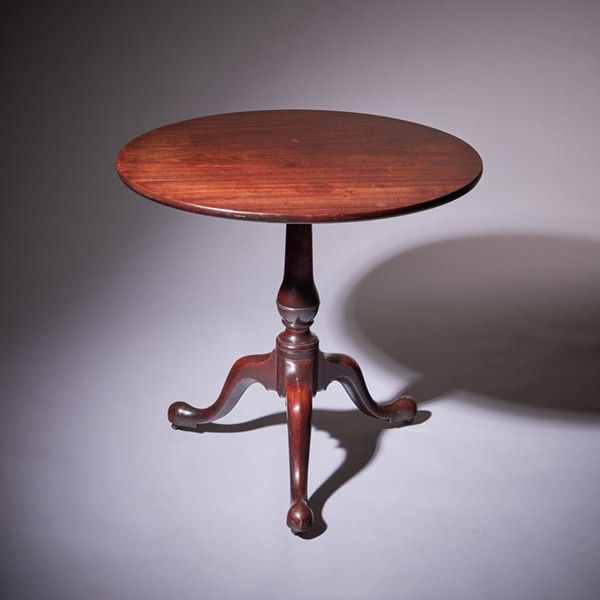
18th Century George III Mahogany Tripod Table, Circa 1770
18th Century George III Mahogany Tripod Table, Circa 1770 £2,200Follow Us18th Century George III...
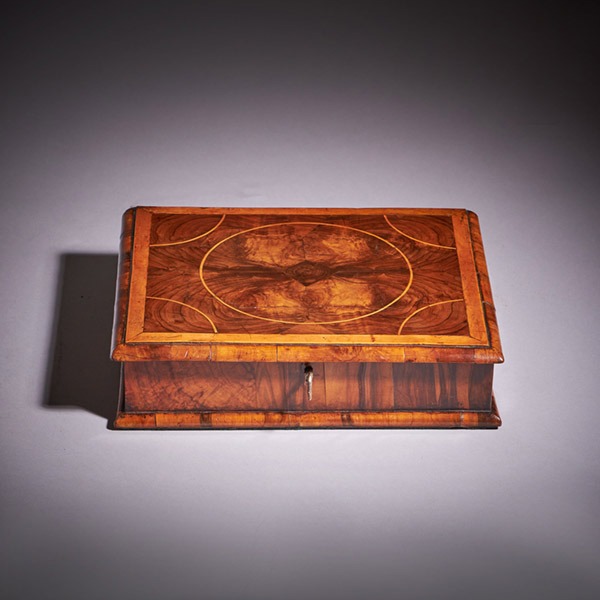
Fine William and Mary 17th Century Olive Oyster Lace Box
Fine William and Mary 17th Century Olive Oyster Lace Box £2,600Follow UsFine William and Mary 17th...
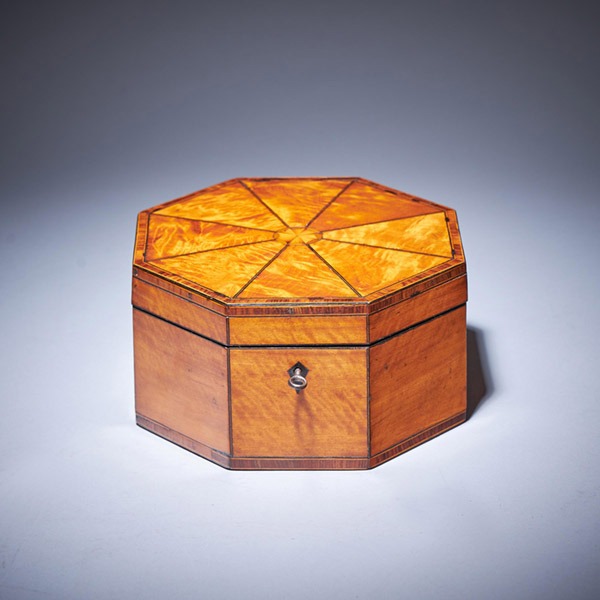
A Fine and Rare George III Octagonal Figured Satinwood Box, C.1790
A Fine and Rare George III Octagonal Figured Satinwood Box, C.1790 £2,200Follow UsA Fine and Rare...
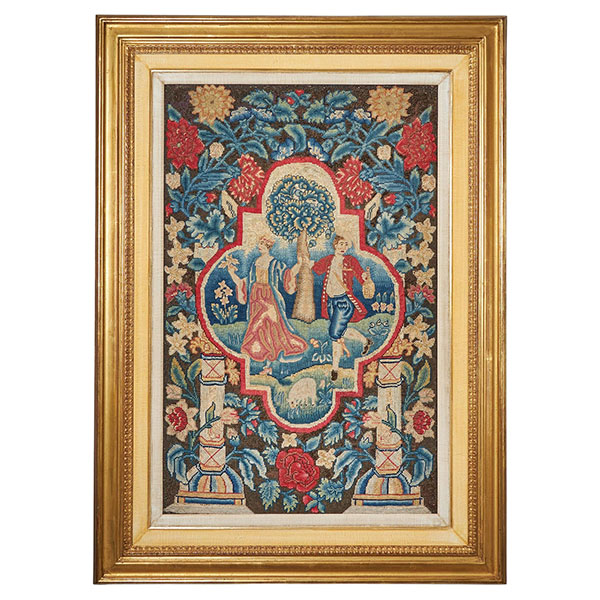
A Rare and Vibrant Framed 18th Century George II Needlework Picture, Circa 1730
A Rare and Vibrant Framed 18th Century George II Needlework Picture, Circa 1730 £16,000Follow UsA Rare and Vibrant Framed 18th Century George II Needlework Picture, Circa 1730 A rare and vibrant early 18th century George II pictorial...
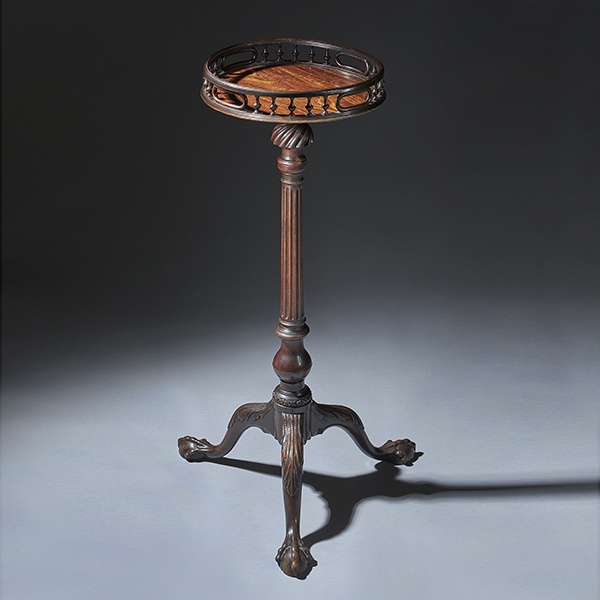
A Fine George II 18Th Century Chippendale Period Carved Mahogany Torchiere. Circa 1755-1765, England
A FINE GEORGE II 18TH CENTURY CHIPPENDALE PERIOD CARVED MAHOGANY TORCHIERE Circa 1755-1765, England £25,000Follow UsA FINE GEORGE II 18TH CENTURY CHIPPENDALE PERIOD CARVED MAHOGANY TORCHIERE, Circa 1755-1765, England An exquisitely fine and...
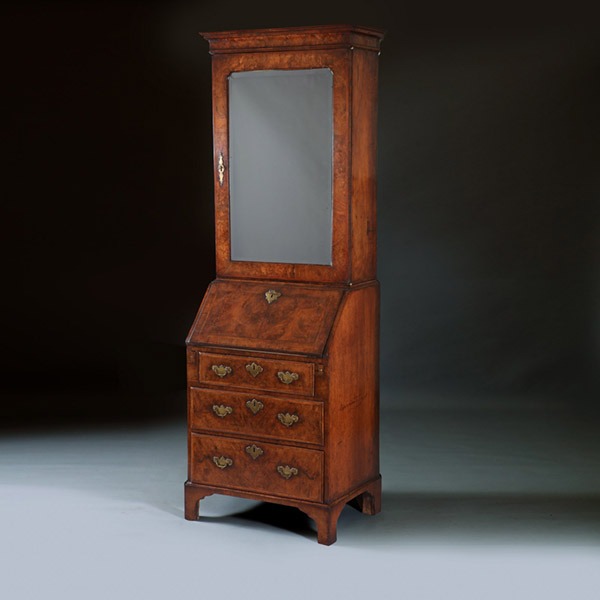
A Fine Early 18th Century George I Burr Walnut Bureau Bookcase, Circa 1715
A Fine Early 18th Century George I Burr Walnut Bureau Bookcase, Circa 1715 £11,500Follow UsA Fine...

18th Century George III Mahogany Tripod Table, Circa 1770
18th Century George III Mahogany Tripod Table, Circa 1770 £2,200Follow Us18th Century George III...

Fine William and Mary 17th Century Olive Oyster Lace Box
Fine William and Mary 17th Century Olive Oyster Lace Box £2,600Follow UsFine William and Mary 17th...

A Fine and Rare George III Octagonal Figured Satinwood Box, C.1790
A Fine and Rare George III Octagonal Figured Satinwood Box, C.1790 £2,200Follow UsA Fine and Rare...

A Rare and Vibrant Framed 18th Century George II Needlework Picture, Circa 1730
A Rare and Vibrant Framed 18th Century George II Needlework Picture, Circa 1730 £16,000Follow UsA Rare and Vibrant Framed 18th Century George II Needlework Picture, Circa 1730 A rare and vibrant early 18th century George II pictorial...

A Fine George II 18Th Century Chippendale Period Carved Mahogany Torchiere. Circa 1755-1765, England
A FINE GEORGE II 18TH CENTURY CHIPPENDALE PERIOD CARVED MAHOGANY TORCHIERE Circa 1755-1765, England £25,000Follow UsA FINE GEORGE II 18TH CENTURY CHIPPENDALE PERIOD CARVED MAHOGANY TORCHIERE, Circa 1755-1765, England An exquisitely fine and...

A Fine Early 18th Century George I Burr Walnut Bureau Bookcase, Circa 1715
A Fine Early 18th Century George I Burr Walnut Bureau Bookcase, Circa 1715 £11,500Follow UsA Fine...








